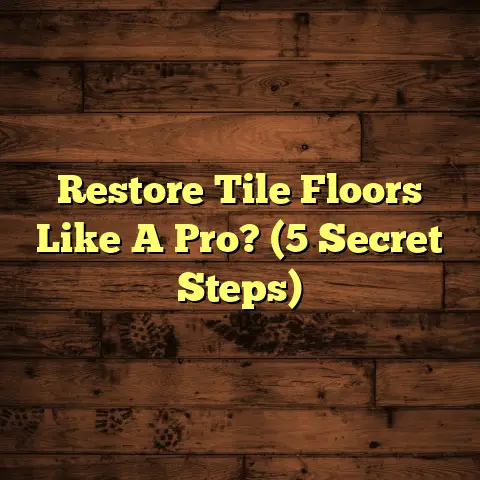Rubber Gym Flooring Cost Per Square Foot (Explained)
Rubber Gym Flooring Cost Per Square Foot (Explained)
When it comes to gym flooring, rubber is a top choice due to its durability, shock absorption, and ease of maintenance.
Understanding the costs associated with rubber gym flooring can help you make informed decisions for your fitness space, whether it’s a home gym or a commercial facility.
This article breaks down the major cost factors, provides detailed price ranges, and compares rubber flooring with alternative options, ensuring you have all the information you need.
Major Cost Factors Impacting Rubber Gym Flooring Installation
1. Area Size
The total area you need to cover significantly impacts the overall cost.
Flooring is typically sold by the square foot, so larger spaces will naturally incur higher material costs.
2. Rubber Type
Rubber gym flooring comes in various forms—rolled rubber, tiles, and interlocking mats.
Each type has different price points:
- Rolled Rubber: Generally less expensive and ideal for larger areas.
- Rubber Tiles: More versatile and easier to replace but can be pricier.
- Interlocking Mats: Convenient for smaller spaces and easy to install but may cost more per square foot.
3. Thickness and Density
Thicker and denser rubber flooring usually offers better sound absorption and durability but comes at a higher price.
Common thicknesses range from 1/4 inch to 1 inch.
4. Labor Costs
Hiring professionals for installation will add to your costs.
Labor rates can vary based on location, the complexity of the installation, and the contractor’s experience.
5. Subfloor Preparation
If your existing subfloor needs repairs or modifications before installation, this could increase your overall costs.
6. Material Grades
Rubber flooring is available in different grades, affecting both performance and price.
Higher-grade materials are more durable and suitable for heavy use but will be more expensive.
7. Room Layout
Irregularly shaped rooms may require additional cutting and fitting, leading to higher labor costs.
8. Additional Considerations
Consider any additional features such as:
- Underlayment: Enhances comfort and sound absorption.
- Finishing Options: Some rubber floors come with surface treatments that can affect pricing.
Detailed Cost Breakdown
Here’s a rough estimate of rubber gym flooring costs:
Example Scenarios
- Small Home Gym (100 sq ft):
- Rolled Rubber: $150 – $350 (material) + $50 – $200 (labor) = $200 – $550
- Medium Commercial Gym (1,000 sq ft):
- Rubber Tiles: $2,000 – $5,000 (material) + $1,000 – $2,500 (labor) = $3,000 – $7,500
Rubber vs Alternative Flooring Options
When choosing gym flooring, it’s essential to compare rubber with alternatives like laminate, vinyl, and carpet:
Key Takeaways
- Rubber is ideal for shock absorption and durability.
- Laminate is cheaper but lacks the performance needed for heavy-duty workouts.
- Vinyl offers a balance but may not provide enough cushioning.
- Carpet is least suitable due to poor durability and maintenance concerns.
Signs Your Rubber Floors Need Replacement
While rubber flooring is durable, it can eventually wear out or become damaged.
Here are signs that it may need replacement:
- Cracks or Tears: Visible damage that can impact safety.
- Deformation: Areas that are uneven or lifting.
- Fading or Discoloration: Significant fading can indicate wear over time.
- Persistent Odor: A musty smell might suggest mold or moisture issues.
Refinishing vs Replacement
In some cases, refinishing may extend the life of your flooring if it only has minor surface damage or wear.
However, if the flooring is extensively damaged or does not meet your needs anymore, replacement may be the best option.
Pros and Cons of Rubber Gym Flooring
Pros
- Durable: Can withstand heavy weights and foot traffic.
- Comfortable: Provides cushioning for joints.
- Easy Maintenance: Simple cleaning process.
- Variety of Styles: Available in different colours and textures.
Cons
- Initial Cost: Higher upfront investment compared to some alternatives.
- Odour: New rubber flooring can emit a smell that may fade over time.
- Installation Complexity: Some types require professional installation.
Professional Installation vs DIY
Cost Differences
While hiring professionals can be more expensive upfront—ranging from $0.50 to $6 per square foot depending on complexity—DIY can save on labor costs but requires tools and knowledge of installation techniques.
Tools Needed for DIY
- Utility knife
- Measuring tape
- Straight edge
- Roller
Skills Required
A good understanding of flooring installation principles is crucial to avoid mistakes that could lead to costly repairs.
Questions to Ask Hardwood Flooring Contractors
Before hiring a contractor for your rubber gym flooring project, consider asking:
- What types of rubber flooring do you recommend for my needs?
- Can you provide references from past clients?
- How do you handle subfloor preparation?
- What warranty do you offer?
- How long will the installation take?
Care and Maintenance Tips for Rubber Gym Flooring
To maximise the longevity of your rubber flooring, follow these maintenance tips:
- Regular Cleaning: Sweep or vacuum regularly to remove debris.
- Mopping: Use a damp mop with mild detergent for deep cleaning.
- Avoid Harsh Chemicals: They can damage the rubber surface.
- Address Spills Immediately: Prevent stains by promptly cleaning any spills.
Conclusion
Rubber gym flooring is a fantastic investment for both home and commercial gyms due to its durability and performance benefits.
Understanding the various cost factors involved—from material types to installation methods—will help you make well-informed decisions tailored to your specific needs and budget.
Whether opting for professional installation or considering a DIY approach, ensure you choose the right materials and techniques to achieve a safe, functional, and aesthetically pleasing gym environment.





